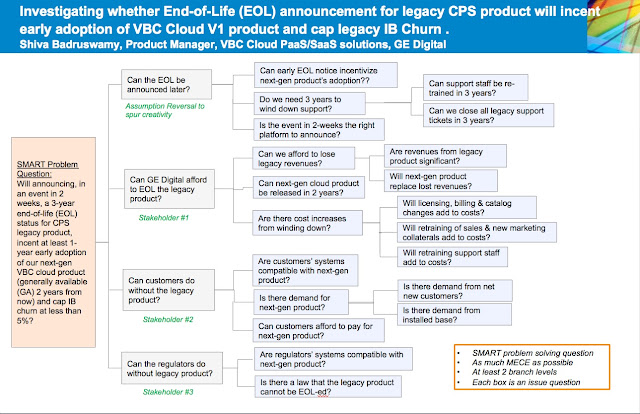Using Issue Trees to investigate Product Cycle and Launch Challenges is an important arsenal in a product manager's armory
Most of the times, as a product manager, I solve complex problems under constraints within a short 2 to 3 weeks time, while not sacrificing creative thinking. The actual work shown here below demonstrates how I use a technique called Issue Tree Analysis (that I learnt from McKinsey Academy's problem Solving Leadership Program that I was nominated to attend by my company GE Digital) to investigate in a structured yet creative way. Structuring the issue as a SMART (Specific, Measurable, Actionable, Relevant, Timely) problem and ensuring the identified issues were MECE (Mutually exclusive, completely exhaustive) were the most significant challenges I faced.
On the positive side, such issue trees helped me capture a 360 degree view of the impacts solving the problem would have and help cover any unexpected failures due to major risk items not being identified for mitigation.
On the positive side, such issue trees helped me capture a 360 degree view of the impacts solving the problem would have and help cover any unexpected failures due to major risk items not being identified for mitigation.

Comments
Post a Comment
Please be responsible with your comments. No cursing or derogatory words please.